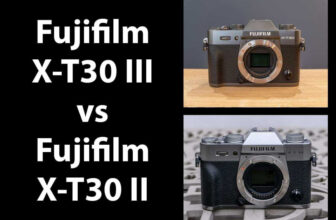
This guide explores the best Shutterstock alternatives for selling stock photographs and explains why you should consider using them.
Selling photos on Shutterstock is a popular way for photographers to generate revenue as a side hustle.
There are also alternatives well worth considering to diversify your income and enjoy competitive royalty shares.
Read on to learn about the payout rates, membership requirements, and more details surrounding Shutterstock alternatives to use.
What is the Best Shutterstock Alternative for Sellers in 2025?
Of all the stock photography sites, Shutterstock has long been the go-to for photographers looking to earn a passive income by selling their photographs.
With its user-friendly platform and access to a global audience, it can bring in consistent monetization from high-quality portfolios.
However, the platform’s low initial earnings, strict submission guidelines, and competitive user base can lead to frustrations.
This guide to the best Shutterstock alternatives is designed to help you diversify your selling platforms and choose those that deliver the best results.
Adobe Stock
- Competitive royalty rates
- Full integration with Adobe software
- Free Creative Cloud based on sales performance
- Non-exclusive agreements
- Strict quality control standards
- Restrictions on setting prices
If there’s an alternative to Shutterstock that’s making waves in the photography community, Adobe Stock is the platform.
Offering access to a large customer base and with competitive royalty rates that include 33% for photos and 35% for videos, its popularity has significantly grown.
Photographers who are applying their skills to AI-created images can also use this content to generate income on the platform.
Members can use a range of tools to build a custom website through which their photographs can be beautifully presented.
This includes keyword tagging and robust categorization, covering everything from drone footage to food, travel, and technology.
Once you’ve uploaded your work, you retain all rights by entering into a non-exclusive partnership for your licensed content.
There’s a bonus program that provides free access to Adobe Photoshop and Lightroom once members have met the criteria.
While some users report long waits for images to be reviewed, the consensus is positive, with many now focusing on Adobe Stock over Shutterstock.
iStock/Getty Images


- Flexible monetization strategies
- Access to premium buyers through Getty Images
- Associated brand prestige
- Optional exclusivity on iStock
- Low per-image payouts
- Some reports of issues with the contributor platform
iStock, previously known as iStockPhoto and purchased by Getty Images in 2006, serves as Getty’s sister company with a focus on microstock.
In contrast, Getty Images serves as a premium stock photography platform requiring strict exclusivity for any creative content.
Together, iStock and Getty Images provide a dual-pronged approach to selling photos, sharing the best images with Getty and other assets with iStock.
For most photographers, iStock’s broader market and budget-friendly pricing is the preferred option, delivering higher sales volumes.
Since iStock is non-exclusive, this means photographers can still upload their creative assets to Shutterstock, Adobe Stock, and elsewhere.
iStock creators can also mirror their content on Getty Images to reach high-end customers, provided it passes the review.
On that topic, getting content accepted on Getty Images can be challenging, particularly for more inexperienced photographers.
It pays to read through the fine print of any contract with such platforms to be clear on what is and isn’t allowed.
Is Getty or Shutterstock Better for Selling Photos?
Choosing between Getty Images and Shutterstock as a source of revenue depends on various factors, from the quality of work to the desired reach.
Shutterstock’s larger selection of images means you’re more likely to find sellers, albeit from smaller businesses and individuals.
Alternatively, professional photographers can earn higher prices through Getty Images’ connections with high-profile clients and companies.
This isn’t available to everyone, since Getty Images maintains high standards for applications curating premium images for commercial use.
Depositphotos


- Global reach to over 200 countries
- Impressive image upload and management tools
- Excellent diversity of content and topics
- Accessible for beginner photographers
- Potential for high earnings is relatively low
- Royalty-tier progression system is slow
While not as popular as iStock and Adobe Stock, Depositphotos nevertheless comes up often in discussions about stock photography platforms.
It’s an easy-to-use platform, which makes it a great starting point for new photographers, with non-exclusive selling for cross-platform sales.
With affordable pricing for buyers, Depositphotos’ high demand does make it easier to generate sales, albeit with generally lower earnings potential.
They also offer bonuses to their top-selling contributors, with a tiered progression system making long-term investment in the platform worthwhile.
If you’re considering uploading video content, however, Depositphotos can be limited, particularly when it comes to LOG or 8K footage.
Pond5


- High commission rates and royalty splits
- Sellers can choose their own prices
- Excellent monetization potential for video content
- Supports music registered with a Performance Rights Organization
- Highly competitive marketplace
- Strict review policies for new sellers
Pond5’s acquisition by Shutterstock was followed by many contributors reporting a drop in quality, both for overall sales and revenue.
While these issues may deter some from listing assets here, the platform does have a healthy reputation for video content sales.
The commission rates are favorable, with 40% royalty rates on sales, and the option for members to establish their own price points.
Pond5’s broad-brush approach to assets also extends to audio files, including music and sound effects, as well as images and videos.
If you’re a videographer with a decent library of video clips, Pond5 is among the best platforms for generating revenue.
Exclusive vs. Non-Exclusive: Should You Stick to One Platform or Diversify?
Selling stock photographs on an exclusive or non-exclusive basis depends on the individual circumstances of each photographer.
In general, many photographers opt to diversify their revenue streams across multiple platforms to maximize their market reach.
This approach provides greater flexibility and avoids missing sales opportunities that exclusivity can result in.
On the other hand, exclusive selling performed through a single agency typically yields higher royalty rates when sales are made.
For example, Stocksy pays its contributors a 50% royalty on standard licenses and a 75% royalty on extended licenses.
Exclusive agencies tend to work with more established photographers with a proven track record that matches the agency’s prestige.
Other Shutterstock Alternatives


The aforementioned Shutterstock alternatives rank among the most popular for generating income for professional photographers.
There are, however, other alternatives that can be considered alongside Shutterstock and other stock photo platforms.
Let’s break down these alternatives and whether they’re worthwhile adding to a diversified approach to stock photo revenue streams:
- Dreamstime: Dreamstime is a platform that frequently appears in lists of stock photography platforms, although with little in the way of buzz as a primary source of income. Claiming to be the world’s largest stock photo marketplace, it pays out 60% in revenue shares for the sale of assets, with extra features ranging from message boards and upload support to in-depth blogs on photography and design.
- Vecteezy: Another major player in the stock photography marketplace industry is Vecteezy, which provides a streamlined upload process for photos, videos, and vectors. Once your resources are accepted, you can earn money through sales while enjoying creative freedom. Be aware that Vecteezy has received several negative reviews in recent months, indicating that some members have issues with the platform.
- Alamy: Alamy’s emphasis on photography and videos makes it another compelling alternative to Shutterstock for creatives working in these mediums. It’s easy to upload content and license photos, videos, and illustrations, with a 50% commission on sales. It’s not a widely reported source of income for many creatives, but it is perhaps worth considering when diversifying revenue streams.
- Canva Pro: Canva Pro’s diverse approach to stock assets covers everything from graphic design elements to commercial photographs. While Canva has a significant international presence as a design resource, discussions from established photographers regarding its potential for revenue from photography are scarce.
It pays to check forums and social media to see if there are any additional issues reported before signing up for a new platform.
Is Selling Stock Photography Still Worth It in 2025?
Selling stock photography has become increasingly challenging in recent years, a reality aspiring photographers need to keep in mind.
There has been a decline in payouts per download, with stiff competition and the rise of low-cost AI images saturating the market.
That said, it’s still possible to generate a consistent passive income through stock photography, particularly for prolific photographers.
Images sold can also be used to promote independent photography business services to clients when reused by reputable outlets.
While stock platforms don’t usually notify contributors when their photos are published, reverse image searches can help track these instances.
FAQs About Which Shutterstock Alternatives Are Best for Selling Stock Photography & Videos
If you still have any queries surrounding Shutterstock alternatives and stock photography in general, these answers to FAQs might help:
Do I have to give my tax information when signing up to sell stock photography?
Yes, most stock photography platforms expect new members to provide tax information when signing up.
Sellers are classed as self-employed contractors, making them responsible for paying taxes on any royalties they earn.
If you’re a photographer based outside the US, you may need to fill out a W-8BEN form, or for UK-based photographers, declare income to HMRC.
Is Shutterstock better than Canva?
Shutterstock and Canva offer different services, with Shutterstock focused on premium and licensed stock media with strict quality control.
In contrast, Canva is oriented toward graphic design assets and services, with templates and tools for creating marketing assets.
Is Freepik better than Shutterstock?
As with the Canva comparison, Freepik and Shutterstock focus on different assets, with Freepik’s emphasis on graphic design.
Vector graphics, illustrations, and templates are commonly found on Freepik, with Shutterstock being superior for photography.
Credit : Source Post





